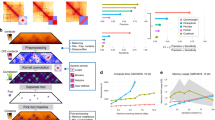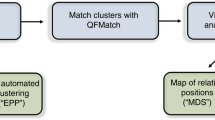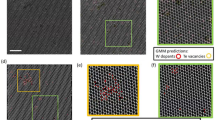Abstract
INTEREST in the automation of cytogenetic analysis has mounted recently. Gilbert described a computer program designed to sort chromosomes into homologous pairs and to assign them to their respective groups1. He suggested “that automation of the analysis of measurements of chromosomes will be a useful tool for the cytologist”. Achievement of this objective has awaited a satisfactory means of data capture, the extraction of information in a computer-compatible form. Of developments in data capture by computer-based pattern recognition methods Gilbert wrote: “While progress has been made, the problem is as yet not fully solved”. A similar view was expressed by Butler et al.2.
This is a preview of subscription content, access via your institution
Access options
Subscribe to this journal
Receive 51 print issues and online access
$199.00 per year
only $3.90 per issue
Buy this article
- Purchase on Springer Link
- Instant access to full article PDF
Prices may be subject to local taxes which are calculated during checkout
Similar content being viewed by others
References
Gilbert, C. W., Nature, 212, 1437 (1966).
Butler, J. W., Butler, M. K., and Stroud, A., Data Acquisition and Processing in Biology and Medicine, 21 (Pergamon Press, New York, 1966).
Ledley, R. S., Science, 146, 216 (1964).
Rutovitz, D., Brit. Med. Bull., 24, 260 (1968).
LaBauve, P. M., LaBauve, R. J., and Petersen, D. F., J. Hered., 56, 47 (1965).
The Cambridge Multiple Access System: User's Reference Manual (edit. by Hartley, D. F.) (University Mathematical Laboratory, Cambridge).
Barron, D. W., Brown, H., Hartley, D. F., and Swinnerton-Dyer, H. P. F., Titan Autocode Programming Manual (University Mathematical Laboratory, Cambridge).
Chicago Conf., Standardization in Human Cytogenetics, Birth Defects, Chicago, Original Article Series II, 2 (The National Heart Foundation, New York).
Lejeune, J., Somatic Cell Genetics, Fourth Macy Conf. Genetics (edit. by Krooth, R. S.) (University of Michigan Press, Ann Arbor).
Patau, K., Amer. J. Hum. Genet., 12, 250 (1960).
Patau, K., in Human Chromosome Methodology (edit. by Yunis, J. J.), 155 (Academic Press, New York, 1965).
Mendelsohn, M. L., Conway, T. J., Hungerford, D. A., Kolman, W. A., Perry, B. H., and Prewitt, J. M. S., Cytogenetics, 5, 223 (1966).
Stewart, J. S. S., and Killean, R. C. G., in Chromosomes Today, 1 (edit. by Darlington, C. D., and Lewis, K. R.) (Oliver and Boyd, Edinburgh, 1966).
Penrose, L. S., Ann. Hum. Genet., 24, 319 (1960).
D-mac Pencil Follower, manufactured by D-mac Limited, Queen Elizabeth Avenue, Glasgow SW2.
Author information
Authors and Affiliations
Rights and permissions
About this article
Cite this article
PERRY, J. System for Semi-automatic Chromosome Analysis. Nature 224, 800–803 (1969). https://doi.org/10.1038/224800a0
Received:
Revised:
Issue Date:
DOI: https://doi.org/10.1038/224800a0
This article is cited by
-
Measurement and Computer System for karyotyping Human and Other Cells
Nature New Biology (1971)
-
Eine halbautomatische Chromosomenme�methode mit dem Koordinatenme�tisch ?Pencil Follower?
Humangenetik (1970)
Comments
By submitting a comment you agree to abide by our Terms and Community Guidelines. If you find something abusive or that does not comply with our terms or guidelines please flag it as inappropriate.



